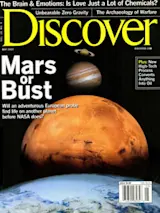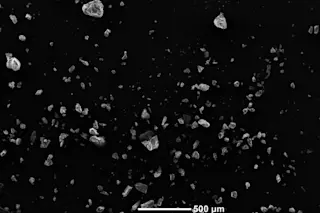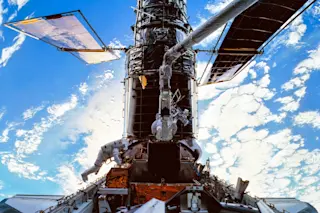The latticelike material in these photomicrographs is trabecular bone—low-density bone that is especially vulnerable to osteoporosis. In these images, the femur of a sheep treated 20 minutes a day for a year (A) shows a third more bone growth than an untreated sheep (B). | Courtesy of Clinton Rubin/SUNY at Stony Brook
Clinton Rubin/SUNY at Stony Brook
A few days after the space shuttle Columbia exploded in the Texas sky last February, Sally Ride, the first American woman in space, addressed the tragedy from a shuttle veteran's point of view. "There is no astronaut in the nation who is not well aware of the delicate nature of the flight," Ride said. "Every astronaut who goes up knows the risk he or she faces."
Spaceflight poses risks for astronauts even when it doesn't end in disaster. Crews on the International Space Station spend months at a time weightless, and without the ...















